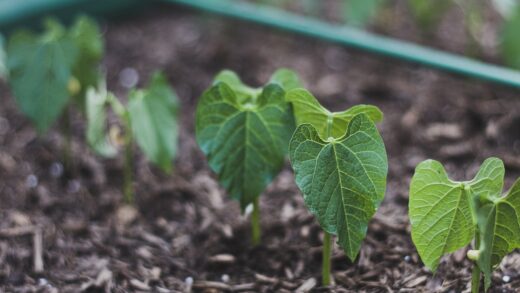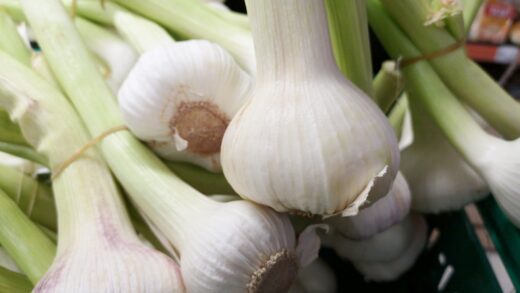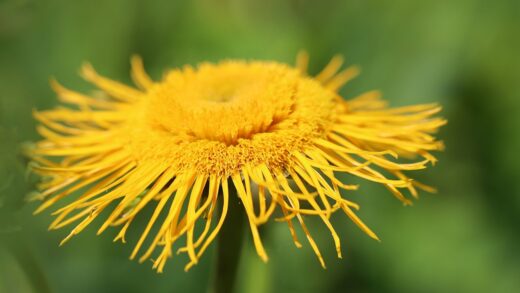The concept of pruning as it applies to the clusius-tulip is fundamentally different from the shaping and trimming associated with shrubs or trees. For these elegant bulbous perennials, the most significant “pruning” decisions revolve around what not to cut, and when. The management of the plant’s foliage after flowering is the most critical aspect of this process and has a direct and profound impact on the long-term health and perennial nature of the bulb. Improper cutting back is one of the most common and detrimental mistakes a gardener can make, effectively starving the bulb of the energy it needs to survive and bloom the following year. Understanding the life cycle of the tulip is therefore essential to wielding your shears with wisdom and restraint.
The primary task after the vibrant display of flowers has concluded is a practice known as deadheading. This involves the removal of the spent flower heads before they can begin to develop seeds. While not strictly necessary for the survival of the plant, deadheading is a highly beneficial practice. It redirects the plant’s energy away from the demanding process of seed production and focuses it entirely on replenishing the bulb. This simple act can significantly enhance the bulb’s ability to store resources, leading to more robust growth and more prolific flowering in subsequent seasons.
The most crucial rule, however, pertains to the foliage. The leaves must be left on the plant to die back naturally, a process that can take several weeks after flowering has finished. During this period, the green leaves are actively photosynthesizing, capturing sunlight and converting it into the starches and sugars that are transported down to the bulb for storage. This stored energy is what fuels the bulb’s survival through dormancy and powers the emergence of next year’s leaves and flowers. Cutting the foliage back prematurely, for the sake of tidiness, is a severe blow to this vital process.
Therefore, the approach to pruning and cutting back the clusius-tulip is one of patience and precise timing. It requires the gardener to tolerate a period of untidy-looking, yellowing foliage in the knowledge that this is a sign of a healthy and natural process. The only cutting that is actively encouraged is the removal of the faded bloom and the eventual cleanup of the fully withered leaves. This minimalist approach respects the plant’s natural rhythm and is the key to creating a self-sustaining and ever-expanding colony of these beautiful species tulips.
The practice of deadheading
Deadheading is the horticultural practice of removing spent flowers from a plant. In the case of the clusius-tulip, this is a highly recommended activity that should be carried out as soon as the flowers have faded and lost their aesthetic appeal. The primary purpose of deadheading is to prevent the plant from setting seed. Seed production is an incredibly energy-intensive process for any plant, and by removing the flower head, you prevent this energy diversion. Instead, all the energy captured by the leaves through photosynthesis can be channeled directly into building up the bulb.
More articles on this topic
The technique for deadheading is simple and straightforward. Using a pair of clean, sharp snips or scissors, or even just your fingers, snap or cut the flower stem just below the base of the flower head. It is important to remove only the flower and the small portion of the stem immediately attached to it. The main flower stalk and all the leaves must be left intact, as they are the essential engines for energy production for the next season.
This simple act can make a significant difference in the perennial performance of the tulip, especially for younger bulbs or those in less-than-ideal conditions. A stronger, better-fed bulb is more likely to survive the summer dormancy, withstand the winter cold, and produce a larger, more vibrant flower the following spring. It is also more likely to produce offset bulblets, which is the primary way that the tulip colony expands and naturalizes over time. Deadheading is a small investment of time that pays large dividends in the long-term vigor of your planting.
While clusius-tulips can be grown from seed, this is a long and patient process usually undertaken only by dedicated hobbyists. For the average gardener whose goal is a reliable and expanding spring display from bulbs, preventing seed formation is the more practical and beneficial course of action. Deadheading ensures that the plant’s resources are invested where they will provide the most immediate and visible return: in the health and size of the underground bulb.
The critical importance of the foliage
The foliage of the clusius-tulip plays a role that is absolutely vital to its survival and ability to perennialize. After the flower has faded, the leaves take center stage, serving as the plant’s solar panels and food factory. For a period of approximately six to eight weeks after blooming, the leaves work to capture sunlight and, through the process of photosynthesis, convert it into the essential sugars and carbohydrates that are the bulb’s food source. This energy is then systematically transported down and stored within the bulb.
More articles on this topic
It is this stored energy that will sustain the bulb during its long summer and winter dormancy and provide the power needed to produce roots, shoots, and flowers the following year. If the foliage is cut back, braided, or tied up while it is still green, this critical energy production process is halted prematurely. This effectively starves the bulb, severely weakening it and drastically reducing its chances of flowering again. A bulb with insufficient food reserves may only produce a single, small leaf the next year, or it may not have the strength to emerge from the soil at all.
Therefore, the single most important rule of post-flowering care is to allow the foliage to remain on the plant until it has yellowed, withered, and died back completely on its own. This visual change is the signal that the energy transfer process is complete and the bulb has entered its dormant state. The yellowing leaves may look untidy in the garden, but this period of “graceful decline” is a non-negotiable part of the tulip’s life cycle.
To manage the appearance of the fading foliage, a good strategy is to plant clusius-tulips amongst companion plants that will begin to grow and fill in as the tulip leaves die back. The emerging foliage of later-season perennials, such as hardy geraniums, hostas, or ornamental grasses, can help to mask the yellowing tulip leaves, allowing them to complete their essential work without becoming a major eyesore.
When and how to clean up
The appropriate time for the final cleanup of the clusius-tulip foliage is when the leaves have turned completely brown and dry. At this stage, they will have a papery texture and will have delivered all of their energy back to the bulb. You will often find that the withered leaves pull away from the ground with a very gentle tug, indicating that the connection to the dormant bulb has been severed naturally. This is the clear signal that it is safe to remove them.
The process of cleaning up is simple. The dry, dead leaves can be gathered by hand or lightly raked from the garden bed. This is primarily a matter of garden hygiene and aesthetics. Removing the dead foliage eliminates a potential hiding place for slugs and other pests and reduces the amount of old plant material where fungal spores could potentially overwinter. This tidies the appearance of the bed, preparing it for the summer season.
This final cut back or removal should be the only time that the primary foliage is cut. Once the leaves are completely brown, they have fulfilled their purpose, and their removal will cause no harm to the now-dormant bulb resting beneath the soil. It is a simple task, but one whose timing is dictated by the plant itself. The gardener must exercise patience and wait for the tulip to give the signal that its annual growth cycle is complete.
After the foliage has been cleared, the bulb requires no further attention until the autumn. It is now in its summer dormancy and needs to be kept in warm, dry soil. All supplemental watering should cease, and the area should not be heavily cultivated to avoid disturbing the resting bulbs. This cleanup is the final act of the spring season, marking the transition to the quiet waiting period of summer.
Cutting flowers for arrangements
Clusius-tulips, with their slender, elegant stems and beautifully marked petals, can make exquisite additions to spring floral arrangements. However, it is important to understand that cutting the flowers to bring indoors will have an impact on the bulb’s energy reserves, as you are removing a significant portion of the plant’s foliage along with the bloom. To enjoy the flowers indoors while still preserving the health of the bulb, a careful cutting technique should be employed.
When cutting a clusius-tulip for a bouquet, it is crucial to leave as much of the foliage on the plant in the garden as possible. The large, lower leaves are the most important for photosynthesis. If possible, try to cut the stem above these main leaves. Select stems that are long enough for your arrangement, but always leave at least two or three leaves on the plant to continue gathering energy to feed the bulb for the following year.
The best time to cut tulips is in the cool of the morning when the stems are fully hydrated. Choose flowers that are still in a tight bud stage but are showing full color. These will open indoors and will last much longer in the vase than flowers that are already fully open when cut. Use a sharp, clean knife or shears to make a clean cut on the stem, and immediately place the cut stems into a bucket of cool water.
While it is tempting to cut a large bouquet, it is best to be selective. For a healthy, established clump, cutting a few stems will not cause significant harm, provided you leave enough foliage behind. However, for newly planted bulbs or smaller, less vigorous clumps, it is often wiser to refrain from cutting the flowers for the first year or two. This allows the bulbs to dedicate all of their resources to establishing a strong root system and building up their energy reserves, ensuring a more impressive and sustainable display in the years to come.
















